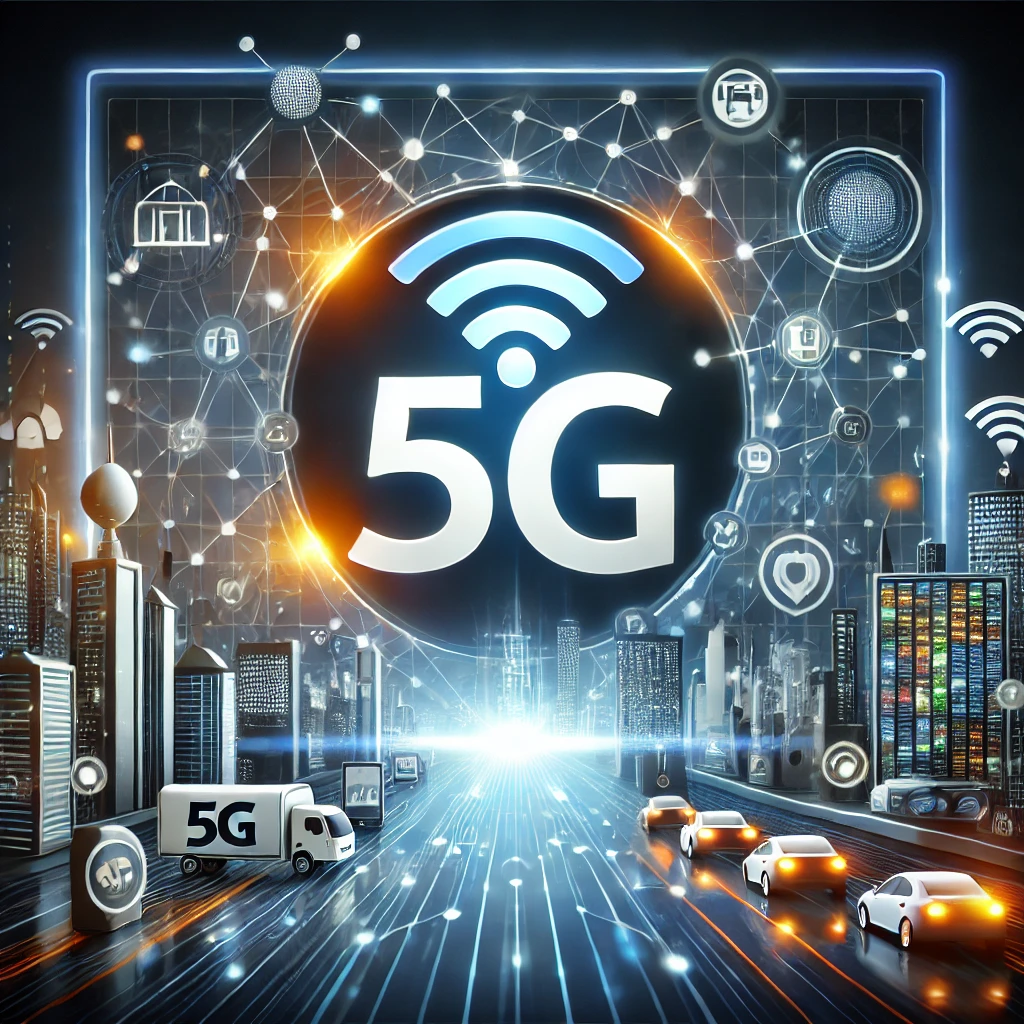The fifth generation of mobile network technology, known as 5G, is revolutionizing the way we connect and interact with the digital world. As the successor to 4G, 5G brings significant advancements in speed, latency, and connectivity that will shape industries and enhance user experiences worldwide. But what exactly is 5G, and how will it impact our daily lives? In this article, we’ll explore the key features of 5G, its potential benefits, and its role in transforming technology as we know it.
What Is 5G?
5G is the latest iteration of cellular technology, designed to enhance mobile networks by offering faster data transfer speeds, lower latency, and the ability to connect more devices simultaneously. Unlike 4G, which focused mainly on increasing speed, 5G aims to create a more efficient, scalable, and reliable network for a wide range of applications beyond smartphones, including smart cities, autonomous vehicles, and the Internet of Things (IoT).
Key Features of 5G Technology
- Lightning-Fast Speeds
One of the most talked-about aspects of 5G is its incredible speed. 5G networks are expected to deliver data at speeds up to 100 times faster than 4G, allowing users to download large files, stream 4K videos, and engage in real-time gaming without lag. In practical terms, this means downloading a full HD movie in just a few seconds! - Ultra-Low Latency
Latency refers to the delay between sending and receiving data, and 5G dramatically reduces this to just a few milliseconds. This ultra-low latency is critical for real-time applications like remote surgery, autonomous driving, and virtual reality, where any delay could result in serious consequences. - Increased Capacity
With 5G, more devices can connect to the network without experiencing congestion. This is crucial for the growing number of IoT devices, including smart homes, wearable technology, and industrial sensors, which require seamless connectivity. 5G’s increased bandwidth allows it to handle massive amounts of data simultaneously, ensuring smooth communication between devices. - Network Slicing
5G introduces a concept called network slicing, which allows operators to create virtual networks tailored to specific applications or services. This means businesses can have dedicated parts of the network optimized for their unique needs, such as enhanced reliability for critical communications in industries like healthcare and manufacturing.
Applications and Benefits of 5G
The impact of 5G extends far beyond faster streaming and downloads. It has the potential to unlock new innovations and improve existing technologies across various industries. Here are a few ways 5G is poised to make a difference:
- Smart Cities
With 5G, cities can become smarter by enabling connected infrastructure like traffic lights, surveillance cameras, and utility grids to communicate in real-time. This can improve traffic flow, reduce energy consumption, and enhance public safety through faster emergency response systems. - Healthcare
5G will transform healthcare by enabling remote patient monitoring, real-time consultations, and even remote surgeries through robotic systems. With its reliable and high-speed connection, doctors can perform complex procedures from anywhere in the world, improving access to care in remote areas. - Autonomous Vehicles
Self-driving cars rely on real-time data from sensors, cameras, and radar to navigate safely. 5G’s low latency and high bandwidth ensure that these vehicles can communicate with each other and their surroundings instantly, paving the way for safer and more efficient transportation systems. - Entertainment and AR/VR
The entertainment industry will experience a significant boost with 5G, as augmented reality (AR) and virtual reality (VR) applications become more immersive and accessible. From interactive gaming to virtual concerts and enhanced live sports viewing, 5G will elevate the entertainment experience to new heights. - Industry 4.0
5G will accelerate the development of Industry 4.0 by supporting advanced automation and robotics in manufacturing. Factories will be able to operate with greater precision, efficiency, and safety thanks to real-time data exchange between machines, reducing downtime and optimizing production.
Challenges of 5G Deployment
While 5G promises numerous benefits, its deployment comes with challenges. The rollout of 5G requires significant investment in new infrastructure, including more antennas and cell towers, to ensure coverage in densely populated areas. Additionally, concerns about security, privacy, and potential health risks associated with increased radiation exposure have been raised, though no conclusive evidence suggests 5G poses a health threat.
The Future of 5G
As 5G continues to expand globally, its full potential is yet to be realized. With ongoing advancements in artificial intelligence, IoT, and edge computing, 5G will likely serve as the backbone for future innovations. From fully autonomous transportation systems to smart factories and enhanced consumer experiences, the possibilities with 5G are limitless.
In conclusion, 5G represents a major leap forward in mobile technology, offering faster, more reliable, and highly efficient connectivity. As businesses and industries adopt 5G, we can expect to see a world that is more connected, automated, and innovative than ever before. The future of 5G is bright, and its impact will be felt across every sector of society.



One thought on “5G Technology Explained: How It’s Transforming Connectivity and Industries”